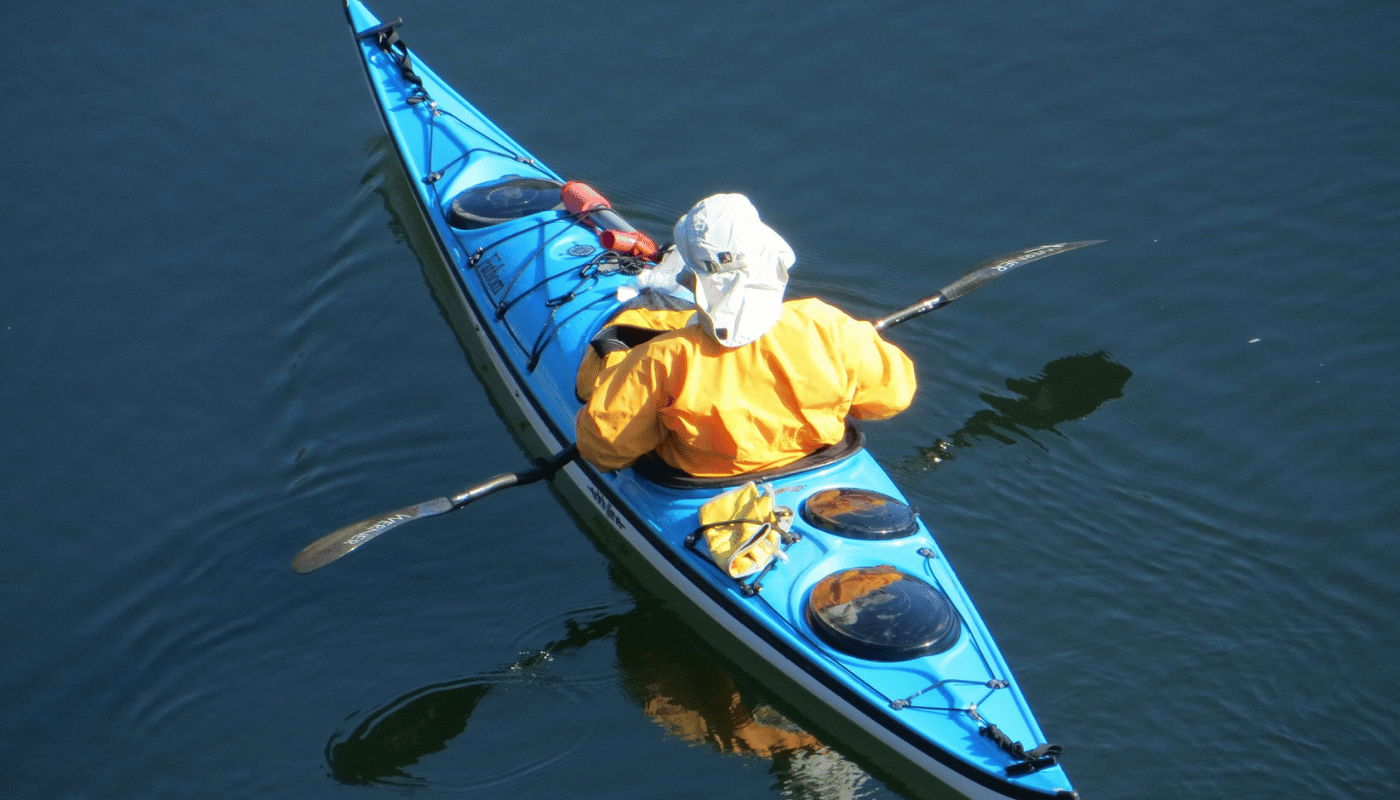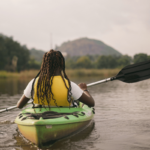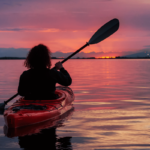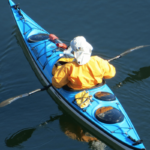Kayaking alone offers a unique sense of freedom and adventure, allowing paddlers to connect with nature in a way that group kayaking may not provide. It’s an opportunity for solitude, personal reflection, and pushing personal limits, all while exploring serene waterways. However, as much as solo kayaking can be an enriching experience, is it safe to kayak alone? The answer depends on several factors that every solo kayaker should consider before embarking on their journey.
While kayaking solo can be peaceful and fulfilling, it also presents distinct risks. Unlike kayaking with a group, there is no immediate help available if something goes wrong. Even experienced kayakers can face unexpected challenges, such as sudden weather changes, capsizing, or becoming disoriented in unfamiliar waters. Without someone nearby to offer assistance, these risks can become significantly more dangerous.
The first step in determining whether kayaking alone is safe involves assessing both personal experience and environmental conditions, including route planning—such as finding out how long it will take to kayak 5 miles. Read this article to learn more about planning your kayaking route effectively. For a beginner, it’s generally advisable to kayak with a partner or a group until becoming comfortable with handling the kayak and dealing with various water conditions. Even seasoned kayakers should carefully consider the location, weather forecast, and their physical readiness before deciding to go out alone. Ultimately, while kayaking solo can be safe with the right precautions, it is crucial to evaluate all the factors that contribute to the overall risk.
Key Risks of Kayaking Alone
Kayaking alone can be an incredibly rewarding experience, but it also comes with a range of risks that must be carefully considered before hitting the water. These risks are even more critical, as the absence of a companion or guide leaves you more vulnerable to unforeseen challenges. Below are some of the key risks to keep in mind:
- Injury Without Immediate Help: If you capsize, injure yourself, or face a medical emergency, being alone means you won’t have anyone nearby to assist or call for help.
- Unpredictable Weather Conditions: Solo kayakers are more vulnerable to sudden weather changes, such as thunderstorms or strong winds, without another person to monitor the sky or call for assistance.
- Lack of Communication Tools: Kayaking alone means there may be no way to quickly reach out for help if things go wrong, especially in remote or isolated locations.
- Equipment Failure: If your kayak or gear breaks down, managing the situation becomes significantly more difficult without a partner to help troubleshoot or even paddle back to shore.
- Wildlife Encounters: While rare, dangerous wildlife encounters (e.g., alligators, sharks) may be more difficult to handle when you are alone and unable to seek immediate assistance.
Each of these risks should be carefully evaluated before deciding to kayak solo. For example, sudden changes in weather can become life-threatening if you are caught unprepared, and without another person to assist you, the chances of escaping a dangerous situation decline. In situations where you might encounter dangerous wildlife, kayaking with a partner provides extra security. Similarly, in the event of equipment failure, it becomes much harder to perform repairs or make adjustments without the help of someone else.
Precautions to Take When Kayaking Solo
If you’re wondering is it safe to kayak alone, taking the right precautions can make all the difference in ensuring a safe and enjoyable experience. Although kayaking solo can be risky, there are several steps you can take to reduce those risks significantly.
The first precaution to consider is proper planning and preparation. Before heading out, always check the weather forecast for the day and monitor conditions in real-time. Sudden changes in weather can catch solo kayakers off guard, so it’s essential to be prepared for the worst. Additionally, knowing the area where you will be kayaking—its potential hazards, access points, and available help—can give you an edge if things go wrong.
Another important precaution is carrying safety and communication devices. A whistle, GPS device, and a waterproof phone or satellite communicator can be lifesavers in emergencies. Make sure that your communication tools are easily accessible and charged. A personal flotation device (PFD) should always be worn and checked for proper fit before getting on the water.
Bringing sufficient supplies is another crucial measure to stay safe while kayaking alone. Ensure that you have enough water, snacks, and sun protection. It’s easy to underestimate the energy required for long trips, so having enough hydration and nourishment can prevent exhaustion and dehydration.
Ideal Conditions for Kayaking Alone
One of the most important factors is the environment in which you are paddling. Choosing the right conditions significantly reduces the risks associated with solo kayaking. Below is a table comparing ideal conditions with potentially dangerous ones:
| Ideal Conditions | Unsafe Conditions |
| Calm, clear weather with no signs of storms or wind | Sudden weather changes, including storms or strong winds |
| Familiar waterways or routes, ideally close to shore | Unfamiliar or remote waters with limited access to help |
| Low traffic on the water (few boats, no large currents) | High traffic or crowded areas with strong currents |
| Water temperatures that are comfortable for extended exposure | Cold or freezing water, increasing hypothermia risk |
In addition to these conditions, solo kayakers should always check the weather and tide charts in advance. The most favorable kayaking conditions for solo paddling are calm, predictable weather and water that does not pose significant challenges, like large waves or strong currents. Ideally, kayaking should be done in familiar, shallow areas, especially for beginners.
Solo kayaking on busy waters, near large boats, or where currents are unpredictable can quickly escalate from a peaceful paddle to a dangerous situation. When choosing an ideal location.
How to Stay Safe While Kayaking Alone
While kayaking alone can offer a sense of freedom, ensuring safety is essential for making the experience enjoyable and risk-free. If you are asking is it safe to kayak alone, there are several key practices that can help minimize dangers and ensure a safe adventure on the water.
The first step is always to check your equipment before heading out. Ensure that your kayak, paddles, life vest, and all gear are in good working order. A malfunctioning piece of equipment can easily turn a peaceful kayak trip into a dangerous situation. This includes making sure your personal flotation device (PFD) is properly fitted and comfortable. Also, double-check that any electronics or communication devices you plan to bring are fully charged and waterproofed.
Another important safety measure is to let someone know your plans. Share your route, estimated time of return, and emergency contact information with a friend or family member. This simple precaution ensures that, in case of an emergency, someone will know where to search for you.
Common Mistakes to Avoid When Kayaking Alone
Solo kayaking can be an immensely rewarding experience, but there are several mistakes that can significantly compromise safety. Avoiding these mistakes will ensure a safer and more enjoyable adventure:
- Not Checking the Weather: Failing to monitor the weather forecast before heading out can lead to dangerous conditions.
- Ignoring Safety Gear: Not wearing or properly using safety equipment, such as a life vest, can turn an enjoyable trip into a disaster.
- Going Too Far from Shore: Paddling in unfamiliar waters without knowing your limits can lead to exhaustion or disorientation.
- Lack of Communication Devices: Not carrying a whistle, GPS device, or cell phone can leave you stranded in an emergency.
These mistakes can be easily avoided with a bit of preparation and awareness. Not checking the weather is one of the most common errors that can lead to danger. The weather can change unexpectedly, and being prepared for these shifts is key to staying safe. If the forecast predicts even a slight chance of storms or strong winds, it’s best to postpone your solo kayaking trip.
Another mistake many solo kayakers make is ignoring safety gear. A well-fitted life jacket is essential for keeping you afloat in case of a capsize. Additionally, a dry bag for your personal belongings, as well as safety signaling devices such as a whistle or flare, can be lifesavers in emergency situations.
Lastly, going too far from shore without fully understanding the waters and your own limitations is a risk that shouldn’t be taken lightly. Always gauge your skill level before venturing far from the shore and know the exact route you intend to take.
Derivation
In conclusion, the question of is it safe to kayak alone doesn’t have a simple yes or no answer. Solo kayaking can offer unmatched freedom and an opportunity for deep personal connection with nature. It’s a form of recreation that many paddlers enjoy, relishing the solitude and the challenge of navigating the waters on their own. However, this freedom comes with inherent risks that need to be carefully considered before heading out.
Solo kayakers are exposed to a range of dangers, from sudden changes in weather to equipment failure, as well as the lack of immediate help should an emergency arise. Unlike kayaking with a group, when problems occur while kayaking alone, there is no one else to assist or call for help. Injuries, especially in remote areas, can become serious quickly without a companion to respond. This is why safety measures, such as checking the weather forecast, carrying a communication device, wearing proper safety gear, and informing others of your plans, are essential.
One of the most important things to remember is that is it safe to kayak alone largely depends on the paddler’s experience, the environment they are kayaking in, and how well they plan for the adventure. For beginners or those unfamiliar with solo kayaking, it’s advisable to kayak in well-known, calm waters, and to stay within close range of the shore. Paddlers who are more experienced, on the other hand, can handle more challenging conditions, but still need to stay cautious and prepared for emergencies.





